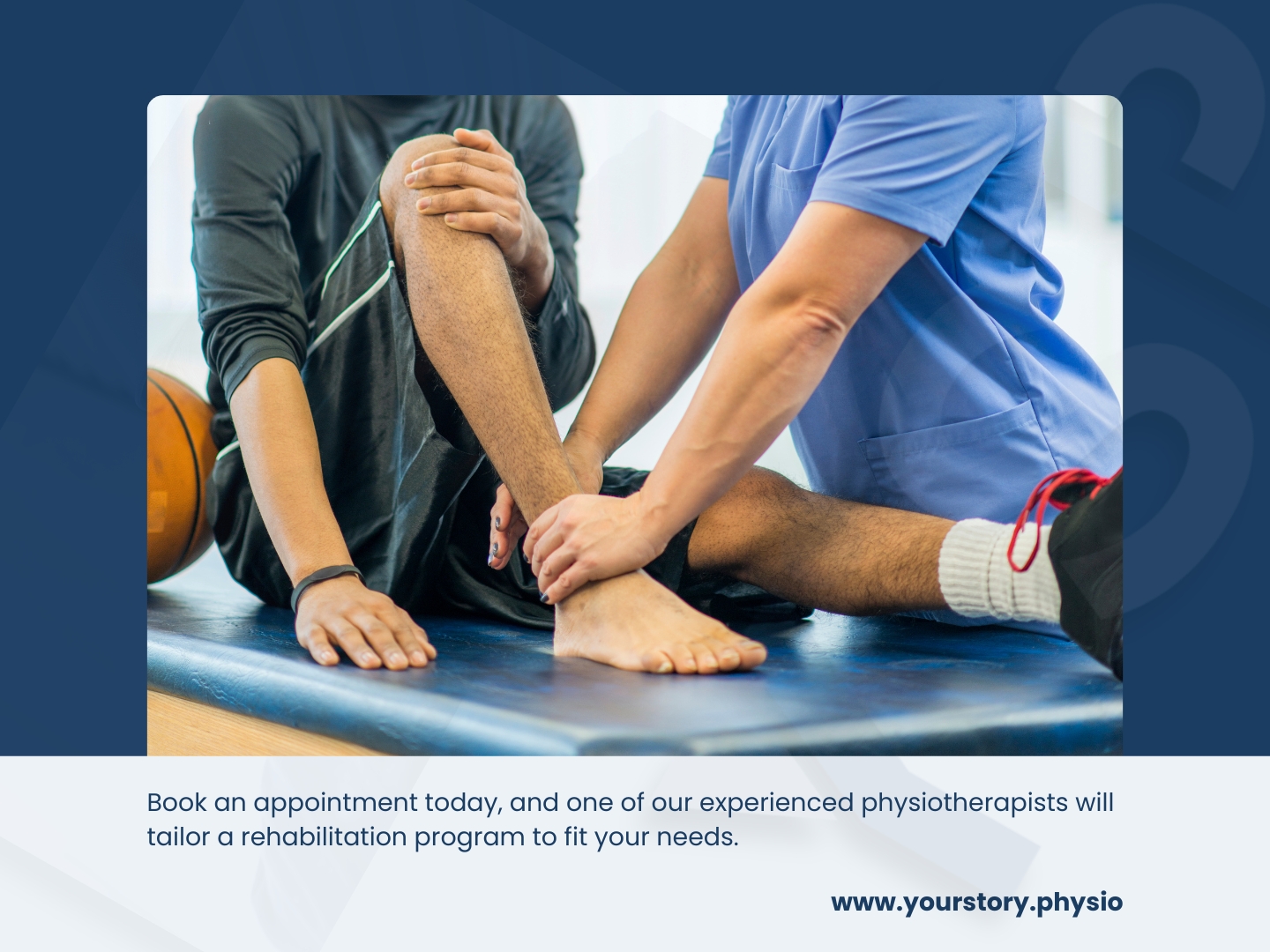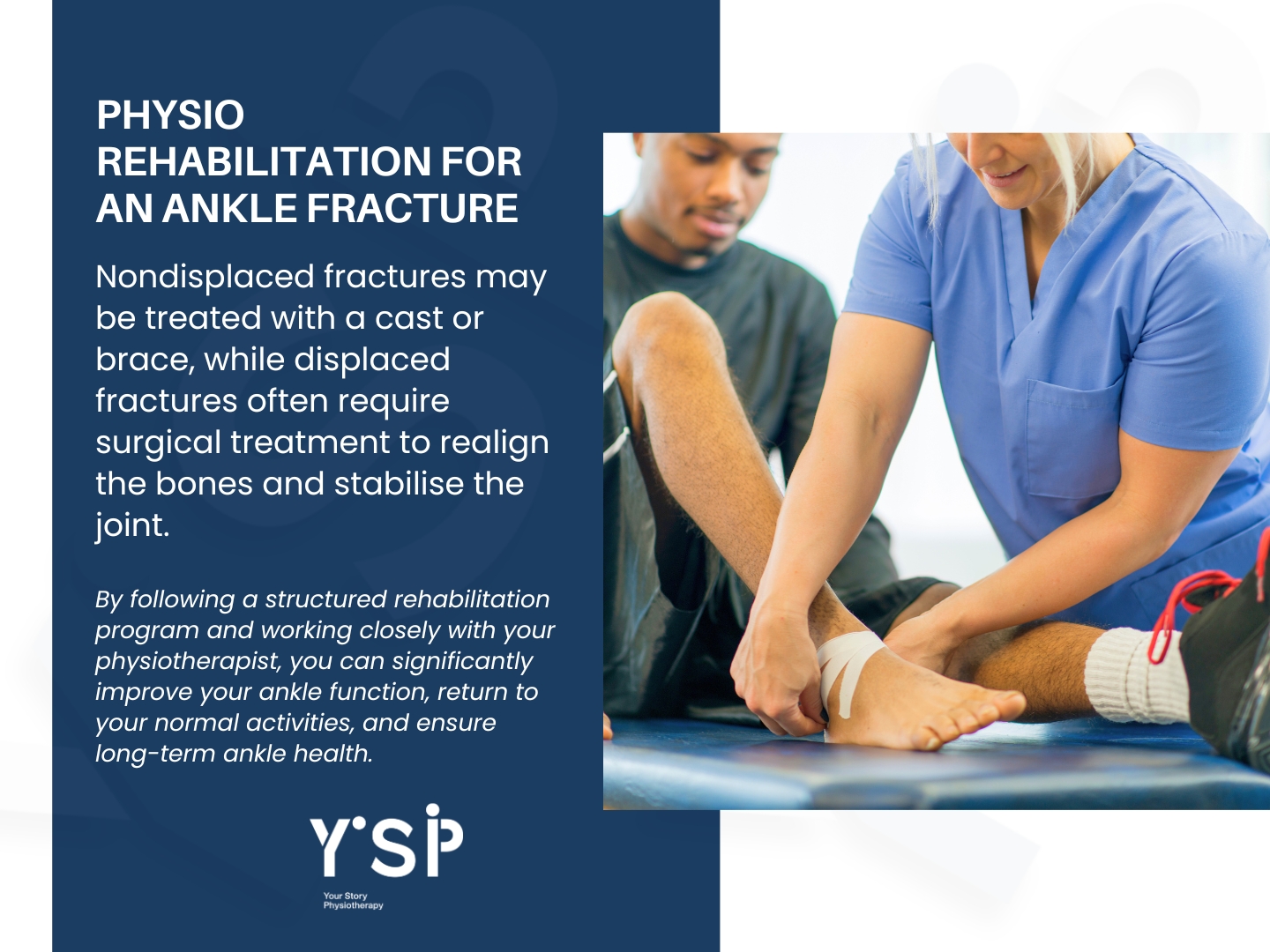Have you found yourself grappling with pain and limitations after an ankle fracture from a car accident? Navigating the road to recovery can feel overwhelming, especially when you just want to get back on your feet and return to your normal life.
Car accidents can result in a myriad of injuries, often leaving individuals with severe physical challenges that require careful attention and rehabilitation. Among these, ankle fractures are common and can significantly impact mobility and daily activities. The road to recovery is critical, but misinformation or lack of proper guidance can lead to setbacks or incomplete healing.
Physiotherapy plays an invaluable role in the rehabilitation process, helping to restore strength, mobility, and functionality to the injured ankle. However, it’s essential to understand the right techniques and strategies that facilitate effective healing and potential pitfalls that can derail progress.
Common symptoms of an ankle fracture
The ankle joint is where the talus bone of the foot attaches to the tibia (shin bone) and fibula of the leg. Trauma here can break any or all of these bones, causing severe agony soon following the accident.
Ankle fractures nearly always result from a traumatic event to the body. Ankle fractures can occur as a result of car accidents, falls, or sports injuries. Ankle fractures are characterised by pain, edoema, bruising, and the inability to bear weight on the broken ankle.
If you feel you have a broken bone in your ankle, you should seek medical assistance right away. Failure to do so could result in long-term complications, considerable loss of function, and future ankle injuries.
Types of ankle fractures
Several types of ankle fractures are classified based on the location and severity of the break. Here are the most common types:
1. Lateral malleolus fracture
- The most common type.
- Involves a break in the lateral malleolus, the bony bump on the outer side of the ankle (lower part of the fibula).
2. Medial malleolus fracture
- It is less common than lateral malleolus fractures.
- Involves a break in the medial malleolus, the bony bump on the inner side of the ankle (lower part of the tibia).
3. Bimalleolar fracture
- The second most common type.
- Involves breaks in both the lateral and medial malleoli.
4. Trimalleolar fracture
- Involves breaks in all three bones of the ankle joint:
- Lateral malleolus
- Medial malleolus
- Posterior malleolus (a small bone on the back side of the tibia)
5. Pilon fracture
- Involves a fracture of the tibia at the ankle joint.
- Often caused by high-energy trauma, such as a car accident or fall from a height.
6. Maisonneuve fracture
- Involves a fracture of the fibula above the ankle joint, along with a tear in the syndesmosis ligament.
- Often caused by a rotational force to the ankle.
Additional classifications for a fractured ankle
Displaced vs. nondisplaced
- Displaced: The broken bone fragments are separated or misaligned.
- Nondisplaced: The bones are broken but still in their correct position and alignment.
Open vs. closed
- Open: The broken bone punctures the skin.
- Closed: The broken bone does not puncture the skin.
How to rehabilitate a fractured ankle
Physiotherapy plays a crucial role in the recovery process after an ankle fracture sustained in a car accident. A well-structured rehabilitation program can help restore range of motion, strength, balance, and overall function of the injured ankle.
Phase 1: Protection and healing
- Immobilisation: This phase of the healing process involves wearing a cast, boot, or brace to protect the healing ankle bone.
- Pain management: Physiotherapists may use modalities like ice, heat, or electrical stimulation to manage pain and inflammation.
- Range of motion exercises: Gentle range of motion exercises are initiated to prevent stiffness and maintain joint mobility. Manual therapy, such as joint mobilisation or soft tissue massage around the ankle, can help reduce joint stiffness.
Phase 2: Regaining strength and functional recovery
- Progressive weight-bearing: As the ankle bone heals, gradual weight-bearing is introduced under the guidance of a healthcare provider.
- Strengthening exercises: Exercises targeting the ankle, calf, and foot muscles are performed to improve strength and stability.
- Balance and proprioception training: Activities like standing on one leg, balancing on uneven surfaces, and performing specific balance drills are incorporated to enhance balance and coordination.
Phase 3: Return to normal activity
- Functional exercises: Activities that mimic daily living tasks and sports-specific movements are practised.
- Plyometric exercises: These exercises involve explosive movements to improve power and agility.
- Sport-specific training: Athletes may undergo specialised training to regain their pre-injury performance level.

Final thoughts
The physiotherapy treatment plan for an ankle fracture will depend on the type and severity of the fracture. Nondisplaced fractures may be treated with a cast or brace, while displaced fractures often require surgical treatment to realign the bones and stabilise the joint.
Everyone’s recovery timeline is different; by following a structured rehabilitation program and working closely with your physiotherapist, you can significantly improve your ankle function, return to your normal activities, and ensure long-term ankle health.
Book an appointment today, and one of our experienced physiotherapists will tailor a rehabilitation program to fit your needs.




